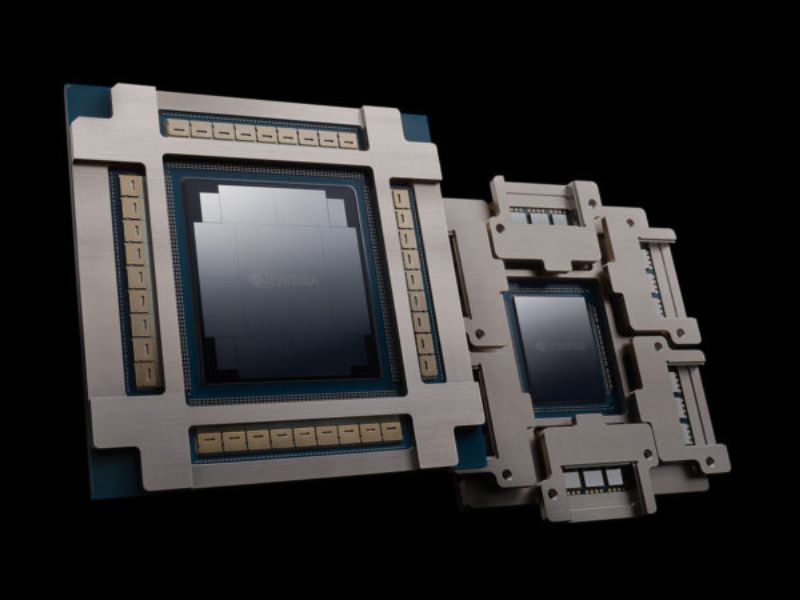
Silicon photonics is expected to develop further, and two companies have published solutions to scale bottlenecks

TechNews Financial News
May 12, 2025
Author Atkinson
May 12, 2025
Author Atkinson
Chips are at the heart of the modern world, in our computers, smartphones, cars, and home appliances. For years, chipmakers have been working to make them more powerful and efficient, thereby further improving the performance of electronic devices. However, due to the increasing cost and complexity of chip manufacturing, coupled with the performance limits set by the laws of physics, the trend of chip progress is gradually slowing down. At the same time, the booming development of artificial intelligence (AI) has brought about the demand for higher computing power.
In view of this, the emergence of silicon photonic chips, which transmit data by light instead of electricity to achieve higher performance, has brought a beacon to the technology community. However, due to many obstacles, silicon photonic chips have not yet been popularized. However, two papers published in the journal "Nature" recently are expected to solve some of the obstacles in silicon photonic chips, providing an important foundation for the popularization of silicon photonics and the ability to achieve complex artificial intelligence computing systems.
According to a report by foreign media livescience, because silicon photonics uses light rather than electricity to transmit and process information, it can achieve faster speeds, greater bandwidth, and higher efficiency. This is because light does not produce current loss due to resistance phenomena, nor does it produce unnecessary heat loss generated by electronic components. However, even with these advantages, the challenges should not be underestimated. In the past, the performance research of silicon photonic chips was usually carried out independently. But because chips occupy a dominant position in the current technology industry, the current development of silicon photonics needs to be integrated with electronic systems.
Among them, because light runs fast, the stage of converting optical signals into electrical signals in the process will slow down the processing time. In addition, photonic computing is also based on analog computing rather than digital computing, which causes photonic computing to require its own software and algorithms, which will reduce accuracy, and also aggravate the integration and compatibility challenges with other technologies, and limit the types of computing tasks that can be performed. Therefore, this has resulted in the current inability to manufacture large-scale photonic circuits with high enough accuracy, making the process of scaling up from small prototypes very difficult.
The report said that in response to these problems, two new papers in the journal Nature have solved many of them. First, Singaporean company Lightelligence demonstrated a new processor for photonic computing, called the Photonic Arithmetic Engine (Pace). The processor has low latency, which means that there is minimal delay between input or command and the computer's response or execution of the operation. In addition, the large-scale Pace processor with more than 16,000 photonic elements can solve complex computing tasks, proving the feasibility of the system in practical applications. The processor shows how to solve the integration of photonic and electronic hardware, precision, and the need for different software and algorithms, which proves that the technology can be developed on a large scale.
As for another paper, Lightmatter from California described a photonic processor that can run two artificial intelligence systems with the same accuracy as traditional electronic processors. The company demonstrated the effectiveness of its photonic processor by generating Shakespearean documents, accurately classifying movie reviews, and running classic computer games. However, even if the platform still has its scalable potential. But the current available materials and engineering limitations still reduce the speed of some processors and the overall computing power.
Previously, both teams said that their photonic systems could be part of the next generation of hardware that can be developed to support artificial intelligence applications. This will eventually make photonic computing feasible. Although further improvements are needed, especially in the use of more efficient materials or designs, overall development is still just around the corner.
Related link: https://finance.technews.tw/2025/05/12/two-companies-announced-solutions-to-solve-bottlenecks-at-scale/
Image source: NVIDIA
Image source: NVIDIA
【Disclaimer】
The content of this article only represents the author's personal opinion and has nothing to do with Creating.
The content, textual description and originality have not been verified by this site. This site does not make any guarantee or commitment to this article and all or part of its content, authenticity, completeness, and timeliness. It is for readers' reference only. Please verify the relevant content yourself.
The content of this article only represents the author's personal opinion and has nothing to do with Creating.
The content, textual description and originality have not been verified by this site. This site does not make any guarantee or commitment to this article and all or part of its content, authenticity, completeness, and timeliness. It is for readers' reference only. Please verify the relevant content yourself.
Creating Nano Technologies, Inc.
59 Alley 21 Lane 279, Chung Cheng Road, Yung Kang City, Tainan, TAIWAN
TEL:886-6-2323927 FAX:886-6-2013306 URL: http://www.creating-nanotech.com
59 Alley 21 Lane 279, Chung Cheng Road, Yung Kang City, Tainan, TAIWAN
TEL:886-6-2323927 FAX:886-6-2013306 URL: http://www.creating-nanotech.com
